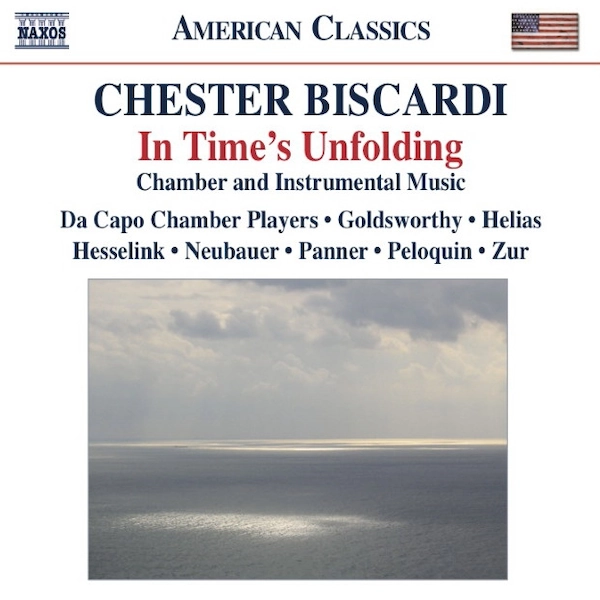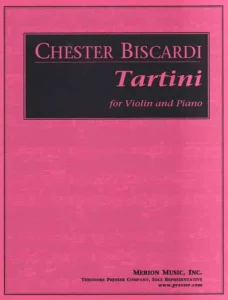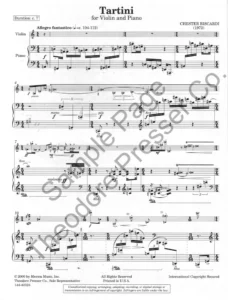Program Notes
Tartini, for violin and piano (1972), was written for Thomas Moore, a member of the Pro Arte Quartet. It employs a twelve-tone row constructed from the melodies that make up the Allegro assai-Andante-Allegro assai movement of Giuseppe Tartini’s “Devil’s Trill” Sonata in G minor (ca. 1714). I also borrow melodic fragments from that work as well as Tartini’s virtuosic technique of juxtaposing two simultaneous voices against an extended trill as countermelody, for which his piece is famous. The “fast-slow-fast” structure of my one-movement work is a miniature representation of the last and more expansive fourth movement of Tartini’s sonata. There are also hints in Tartini from Arnold Schoenberg’s Phantasy (1949) and Charles Wuorinen’s Duo (1967), two works for violin and piano that particularly impressed me as a young composer.
I see Tartini as the first significant work that I wrote as an adult. I started writing music when I was nine but took a hiatus from composing in my late teens due to family pressures to become a lawyer. I didn’t become a lawyer, but after finishing an undergraduate degree in English literature I did become a graduate Italian scholar before moving back into music. My studies in English and Italian have had a profound effect on my musical process, and I continue to be influenced by the ways literature can generate musical ideas and form – how literary images can inspire everything from the smallest melodic shape to a work’s overall structure.
It’s not surprising then that early on I would turn to an Italian composer and a poem about his musical experience to generate the musical ideas and form of Tartini. Charles Burney’s 1773 account about how the devil supposedly appears to Tartini in a dream has become legend. Tartini handed the devil his violin and was astonished when he heard him play “with consummate skill, a sonata of such exquisite beauty as surpassed the boldest flights of my imagination. I felt enraptured, transported, enchanted; my breath failed me, and I awoke. Seizing my violin I tried to reproduce the sounds I had heard. But in vain. The piece I then composed, the “Devil’s Trill” Sonata, although the best I ever wrote, how far was it below the one I had heard in my dreams!”
I was inspired by a poetic adaptation of that legend by my friend, Lois Drapin, in her poem, “Tartini Dreams Trillo del Diavolo” (1972):
The night Tartini slept, he woke the Devil.
The creature came to him, unchained and crazed.
The rabid dog strikes first at his own master.
The creature came to him whose flesh he craved
And stood before him freed from his horsehair grave.
And Tartini screamed the scream that loosed his soul
His body twisting with his night-hawk call.









